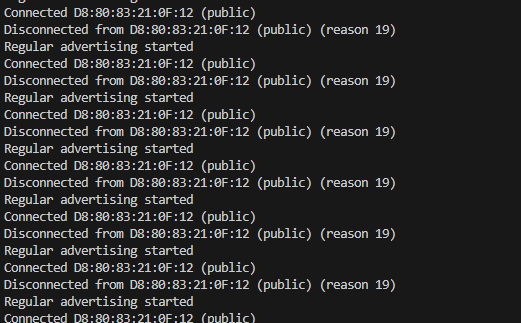I'm using the BLE mouse example, and the problem I'm having is if I remove the pairing/bonding information from the device, Windows will keep trying to pair with the device:
Essentially, what I want is to only have one bond on the device. If a user presses a button, it should disconnect any active connections, remove the bonding information, then start advertising again. Because Windows has the old bonding information still stored, it tries to connect repeatedly. How can this be avoided, without saying to someone to remove the bond from their PC. If I take for example my MX mouse, I remove the bonding on it, by connecting to a different device, go back into pairing mode, my Windows PC doesn't keep trying to connect to the device. In fact.




